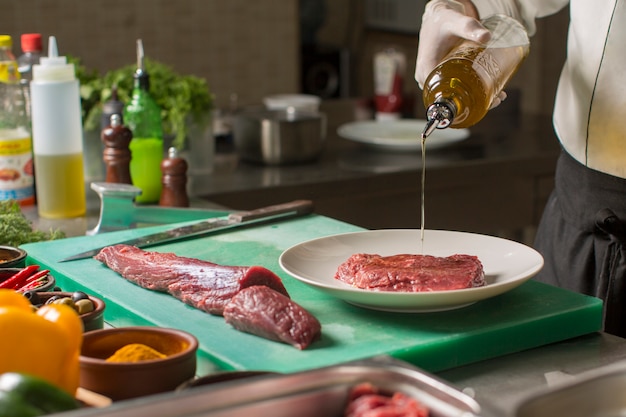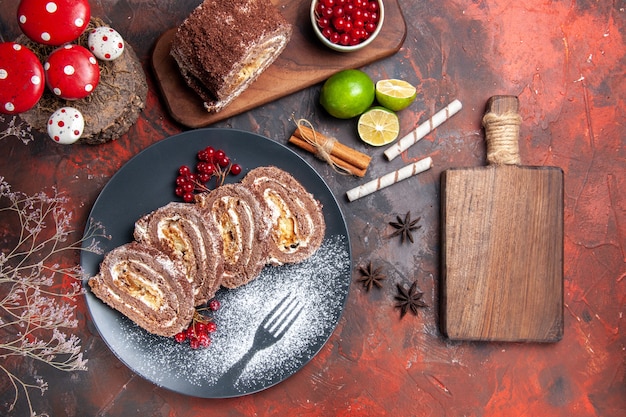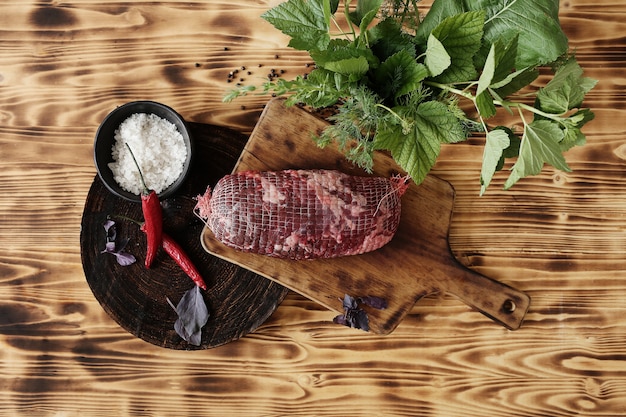Ah, steak. It's a culinary classic, a symbol of a good time, and frankly, one of my favorite things to cook. I've spent years perfecting my grilling, pan-frying, and even slow-roasting techniques, and nothing beats a perfectly cooked sirloin steak. It's juicy, tender, and bursting with flavor. But achieving that perfect level of doneness can feel like a culinary gamble. So, let me share my tried-and-true guide to cooking top sirloin steak, complete with specific cooking times and tips to help you nail it every time.
Part 1: The Lowdown on Top Sirloin

Before we dive into the cooking, let's get acquainted with our star ingredient. Top sirloin is a cut of meat that's versatile and flavorful. It's a great choice for grilling, pan-frying, and even slow-cooking. It's known for being lean, which makes it a healthy choice, but it also means it can be a little bit tougher if not cooked correctly. That's where this guide comes in handy!
Why Choose Top Sirloin?
Top sirloin is a great value cut of meat, meaning it's wallet-friendly. It's also quite forgiving – even if you overcook it a little bit, it'll still be tasty. Of course, it's not as tender as a filet mignon, but it's packed with flavor. It's all about knowing how to cook it right, which is what we're about to discuss.
choosing the right cut: Your Top Sirloin Options
When you're at the butcher counter, you'll notice a few different options for top sirloin. You can find it boneless or bone-in, and in various thicknesses. I'm a sucker for a bone-in steak – there's something rustic and charming about it. The thickness is key when it comes to cooking time. You can find a 1-inch steak, perfect for a quick sear, or a thicker 2-inch cut for a more even cook. The thicker the steak, the longer it will take to cook.
Part 2: Setting the Stage for a Stellar Steak

So, you've got your top sirloin, ready to become a culinary masterpiece. Now it's time to get it prepped for cooking. These few steps might seem simple, but they make a world of difference in the final taste and texture.
Patience is Key: Let Your Steak Rest
Don't rush the process. The first step is to let your steak rest at room temperature for about 30 minutes before you start cooking. This allows the meat to come up to a more consistent temperature and ensures a more even cook. I know, it might be tempting to just throw it on the grill, but trust me, it's worth the wait. Your steak will thank you for it!
Drying for a perfect sear: Pat It Down
Before you start cooking, pat your steak dry with paper towels. This is a crucial step for achieving a beautiful, crispy sear. You want that golden-brown crust on the outside, and excess moisture will just prevent that from happening.
Seasoning: A Simple Yet Crucial Step
Now comes the fun part: seasoning! You can keep it simple or get adventurous here. I usually stick with a classic combination of salt and pepper, a sprinkle of garlic powder, and maybe a pinch of paprika. Remember, a little goes a long way. Too much seasoning can actually mask the natural flavor of the steak. You can experiment with other herbs and spices, but always keep it simple and let the flavor of the steak shine through.
Part 3: Mastering the Cooking Times: Your Guide to Doneness

This is where the real magic happens - achieving the perfect level of doneness. There's a world of difference between a juicy rare steak and a well-done one. This is where your trusty meat thermometer comes in handy.
Rare: A Cool Red Center for the Bold
A rare steak will have a cool red center, and it's going to be incredibly tender. It's not for everyone, but if you like your steak on the less cooked side, this is the one for you. To achieve rare, you'll need to cook it for a shorter amount of time. A 1-inch steak will take around 2-3 minutes per side, while a thicker 2-inch steak might need 4-5 minutes per side. After cooking, let your rare steak rest for 5-10 minutes before slicing and serving. This allows the juices to redistribute, resulting in a more tender and flavorful steak.
Medium-Rare: The Goldilocks of Doneness
This is my personal favorite! A medium-rare steak is still quite pink in the center, but with a hint of brown. It's the perfect balance of tenderness and flavor. You'll need to cook a 1-inch steak for about 3-4 minutes per side, and a 2-inch steak for about 5-6 minutes per side. This is a good choice for those who enjoy a slightly more cooked steak, but still want to keep it juicy.
Medium: For a Balanced Flavor
If you prefer your steak a bit more cooked, medium is the way to go. This level of doneness has a brown center with a slight pink hue. For a 1-inch steak, cook for about 4-5 minutes per side, and for a 2-inch steak, it'll need about 6-7 minutes per side. This is a good option if you're looking for a more balanced flavor profile.
Medium-Well: A Step Closer to Well-Done
For those who like their steak more on the cooked side, medium-well is a good choice. It will have a slightly pink center. For a 1-inch steak, cook about 5-6 minutes per side, and for a 2-inch steak, it will need around 7-8 minutes per side. This is a safe option for those who are unsure about their preferred doneness.
Well-Done: Completely Browned Through
A well-done steak will be completely brown throughout. If you prefer your steak well done, a 1-inch steak will take about 6-7 minutes per side, and a 2-inch steak will need about 8-9 minutes per side. It's important to note that well-done steaks tend to be tougher and drier than those cooked to a lower level of doneness. But, if that's what you enjoy, go for it!
Part 4: cooking techniques: From Grill to Pan
Now that we've covered the different levels of doneness, let's talk about how to actually cook your top sirloin steak. There are plenty of ways to achieve delicious results, from the classic grill to the trusty pan.
Grilling: The Classic Method
Grilling is a fantastic way to bring out the best in top sirloin. You'll get those beautiful grill marks and a smoky flavor that elevates the experience. Get your grill nice and hot – aim for around 450°F (232°C) for a good sear. If you're using a gas grill, turn the burners on high heat. If you're using a charcoal grill, make sure the coals are hot and glowing.
Place your steak on the grill and close the lid. Sear each side for 2-3 minutes, flipping only once. After the initial sear, reduce the heat to medium-high and continue cooking for another 3-4 minutes per side for a 1-inch steak, or 5-7 minutes per side for a 2-inch steak. You'll want to keep a close eye on your steak, especially when grilling, to make sure it doesn't burn.
Pan-Frying: For When the Weather Doesn't Cooperate
Pan-frying is a great alternative if you don't have a grill or it's too cold to grill outside. You can achieve a delicious sear in a cast iron skillet or even a non-stick pan. Get your pan nice and hot, add a tablespoon or two of oil, and make sure it's shimmering before adding your steak. You want to hear a sizzle when the steak hits the pan – that's the sign of a good sear!
Place your steak in the pan and sear for 2-3 minutes per side. Don't move it around too much; just let it cook undisturbed. After the initial sear, reduce the heat to medium-high and continue cooking for another 3-4 minutes per side for a 1-inch steak, or 5-7 minutes per side for a 2-inch steak.
Slow-Cooking: For the Patient and Flavor-Seeking
For a truly tender, melt-in-your-mouth steak, slow-cooking is the way to go. This method is especially well-suited for thicker cuts of top sirloin. Simply place your steak in a slow cooker, season it generously, and cook on low heat for 4-6 hours. It's the ultimate hands-off method, perfect for a busy weeknight. You can even use this technique for an amazing pulled sirloin steak sandwich later!
Part 5: The Art of Resting: Unlocking Juiciness
Your steak is cooked! But before you dive in, remember the importance of resting. Let it rest for 5-10 minutes before slicing. This allows the juices to redistribute throughout the steak, ensuring a tender and juicy result. You'll notice a difference!
Part 6: Serving with Style: Elevate Your Steak Game
You've cooked your top sirloin steak to perfection, rested it, and it's time to enjoy your culinary masterpiece! But what to pair it with? You can keep it classic with roasted vegetables or mashed potatoes, or you can get a bit more adventurous with a chimichurri sauce or a creamy béarnaise sauce. I love a side of grilled asparagus or sauteed mushrooms to complete the experience.
Part 7: Tips for Steak Success: Level Up Your Skills
You've got the basics down, but here are a few extra tips to help you achieve steak perfection:
- Don't overcrowd the pan or grill: Make sure there's enough space for your steak to cook evenly. If you crowd it, you'll end up with uneven cooking and a less-than-desirable sear.
- Use a meat thermometer: This is the most reliable way to check for doneness. It takes the guesswork out of it.
- Flip your steak only once: You want to get a nice sear on each side, so don't flip it too often. Each flip disrupts the sear, so the fewer flips, the better.
- Let your steak rest: This is crucial for a juicy and tender steak. We already talked about this, but it's worth repeating!
- Experiment with different seasonings: Don't be afraid to get creative with your seasonings. From fresh herbs to spice blends, there are endless possibilities.
- Don't overcook your steak: It's better to err on the side of undercooked than overcooked. You can always cook it for a few more minutes if needed. But once it's overcooked, it's tough to undo.
Part 8: Common steak mistakes: Avoid the Pitfalls
As a seasoned cook, I've seen my share of steak mishaps. Let's avoid those, shall we? Here are some common mistakes and how to avoid them:
- Not letting the steak rest at room temperature: This is a crucial step for even cooking. It's a simple step that makes a big difference.
- Overcrowding the pan or grill: This will lead to uneven cooking and a less-than-desirable sear. Give your steak some space!
- Flipping the steak too often: This will result in a dry and tough steak. One flip is usually enough.
- Not resting the steak before slicing: This will lead to a dry and tough steak. This one is crucial.
- Overcooking the steak: This will result in a dry and tough steak. It's better to err on the side of undercooked, as you can always cook it for a few more minutes.
Part 9: FAQs: Your Steak Questions Answered
I know you might have some burning questions about cooking top sirloin steak. Let's address those.
What's the best way to store top sirloin?
To keep your top sirloin fresh, store it in the refrigerator for up to 3-5 days. Wrap it tightly in plastic wrap or aluminum foil, or store it in an airtight container. If you want to keep it even longer, you can freeze it for up to 3-4 months. Just make sure to wrap it tightly to prevent freezer burn.
Can I cook top sirloin in the oven?
Absolutely! You can bake top sirloin in the oven at 375°F (190°C) for about 15-20 minutes for a 1-inch steak, or 20-25 minutes for a 2-inch steak. You can also try broiling it for a quick sear.
Can I use a marinade?
Yes, marinating your top sirloin can add extra flavor and tenderness. You can use a simple marinade made with olive oil, lemon juice, garlic, and herbs, or you can get creative with your own blend of flavors. Marinate your steak for at least 30 minutes, but no longer than 24 hours.
How do I know when my steak is done?
The best way to tell when your steak is done is to use a meat thermometer. You want to check the internal temperature in the thickest part of the steak. For different levels of doneness, refer to the temperature guidelines mentioned earlier.
What if I overcook my steak?
Don't panic! It's not the end of the world. If your steak is a bit overcooked, it might be a bit tougher, but it can still be flavorful. You can try adding a rich sauce or gravy to add moisture and compensate for the drier texture.
Part 10: Conclusion: The Joy of a perfect steak
And there you have it! A complete guide to cooking top sirloin steak to perfection. From selecting the perfect cut to mastering the cooking times, and from choosing your cooking technique to mastering the art of resting, you've got all the knowledge you need to impress your friends and family with your culinary skills. So get your aprons on, get your grill hot, and get ready to enjoy a delicious, perfectly cooked top sirloin steak.
Remember, cooking a great steak is all about confidence and a bit of practice. Don't be afraid to experiment with different techniques and seasonings. The more you cook, the better you'll become. And most importantly, have fun!
Now, go out there and make a delicious steak that you'll be proud of!
Everyone is watching

How to Cook Frozen Lobster Tails Perfectly: A Step-by-Step Guide
RecipesLobster. Just the word conjures up images of lavish meals, special occasions, and a taste of luxury. But let's...

Pigs in a Blanket Cooking Time: How Long to Bake for Perfect Results
RecipesAh, pigs in a blanket. Just the name conjures up images of those delightful little parcels of crispy pastry en...

Pork Fillet Cooking Time: How Long to Cook It Perfectly
RecipesPork fillet, or tenderloin as it's sometimes called, is a real favourite in our house. It's so versatile, and...

The Ultimate Guide to Tender, Juicy Pulled Pork
RecipesRight, let's talk pulled pork. It's one of those dishes that just screams "comfort food," doesn't it? I mean...

The Ultimate Guide to Cooking Sweet Potatoes: From Roasting to Mashing
RecipesSweet potatoes. Just the name conjures up images of warm, comforting dishes, bursts of vibrant color, and a to...
